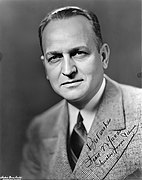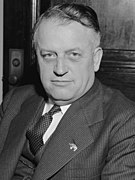
Back ھەڵبژاردنی ئەنجومەنی پیرانی ئەمریکا (١٩٥٠) CKB Wahlen zum Senat der Vereinigten Staaten 1950 German 1950년 미국 상원의원 선거 Korean
| ||||||||||||||||||||||||||||||||||||||||
36 of the 96 seats in the United States Senate[a] 49 seats needed for a majority | ||||||||||||||||||||||||||||||||||||||||
|---|---|---|---|---|---|---|---|---|---|---|---|---|---|---|---|---|---|---|---|---|---|---|---|---|---|---|---|---|---|---|---|---|---|---|---|---|---|---|---|---|
| ||||||||||||||||||||||||||||||||||||||||
 | ||||||||||||||||||||||||||||||||||||||||
| ||||||||||||||||||||||||||||||||||||||||
The 1950 United States Senate elections occurred in the middle of Harry S. Truman's second term as president. The 32 seats of Class 3 were contested in regular elections, and four special elections were held to fill vacancies. As with most 20th-century second-term midterms, the party not holding the presidency made significant gains. The Republican opposition made a net gain of five seats, taking advantage of the Democratic administration's declining popularity during the Cold War and the aftermath of the Recession of 1949. The Democrats held a narrow 49-to-47-seat majority after the election. This was the first time since 1932 that the Senate majority leader lost his seat, and the only instance of the majority leader losing his seat while his party retained the majority.
Cite error: There are <ref group=lower-alpha> tags or {{efn}} templates on this page, but the references will not show without a {{reflist|group=lower-alpha}} template or {{notelist}} template (see the help page).

